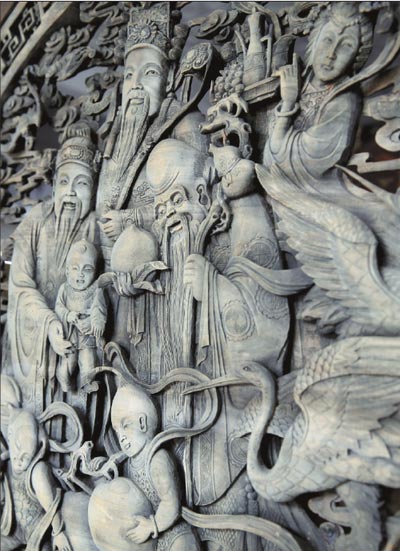 |
|
The craftsmanship in every detail, like the wood carving, makes every set of Heyixing funiture a piece of artwork. Jiang Dong / China Daily |
Unique experience
Yu's years of experience in traditional industrial arts, continuous pursuit of top-quality products and taste in art have helped shape the company's culture and brand as well as inject vitality to its growth.
In 1981, Yu worked in Beijing Gold Lacquer Inlays Factory. The plant was a leading manufacturer of lacquer works, including furniture with inlays, in China. According to Yu, making furniture with inlays is the top of the trade as it involves craftsmanship of various professions.
Yu excelled in the plant as he was assiduous and keen to learn. He quickly moved up the management ladder and was poised to be the factory manager's successor.
In 2000, Yu took an abrupt turn in his career by quitting the factory and setting up a furniture plant of his own with three partners. He said the opportunities that emerged from China's reform and opening-up policy helped him make the decision. "Opportunities are only available to those who are prepared," he said.
As old furniture was the best-seller in the market at the time, Yu started his business by collecting old furniture from communities and repairing it to then resell it for a profit. His factory then focused on manufacturing antiqued Chinese furniture with rare hardwoods including gold simmering nanmu, rosewood and huanghuali.
Like most people who start their own businesses, Yu endured many hardships and said the winter of 2001 was his most difficult time. "We made the first batch of furniture with almost all the money we had, but no orders came. I had to make a hard choice between shutting down and making a job cut," he recalled.
"I chose neither options and continued paying the staff with my own money," the 57-year-old said.
As orders finally started to come in, Yu's factory struggled through the difficult times and embarked on a fast track to development.
With Yu's perseverance in ensuring every piece of furniture created was a work of art, Heyixing products soon became popular in the domestic market and also appealed to foreigners. Each year, the factory's exhibitions of furniture at the Canton Fair and Shanghai International Furniture Exhibition attracted dealers from both home and abroad.
Before 2006, the overseas orders Heyixing received were worth $3 million to $4 million each year. But Heyixing's antiqued furniture business soon met with a downturn. Yu blamed the shoddy and counterfeit furniture products that yielded quick economic returns, which he said were rampant and disrupted the market.
"It is a pity that years of cut-throat competition has seriously tarnished the fame of Chinese furniture in the international market. China is indisputably the number one furniture exporter, but Chinese furniture's added value and price rank fairly low in the world," Yu sighed.
|
|
|
|
|
|
|
|
